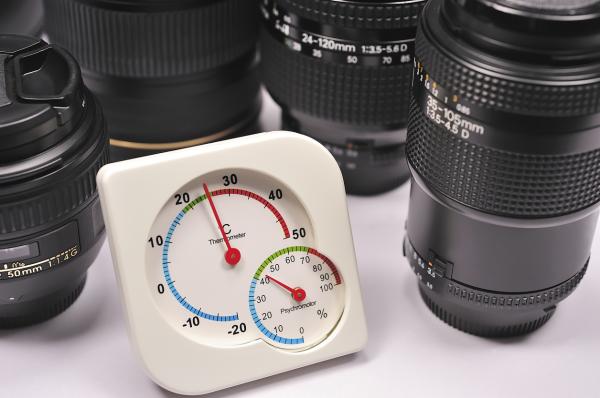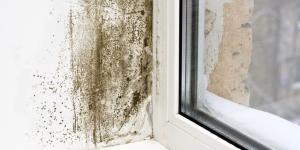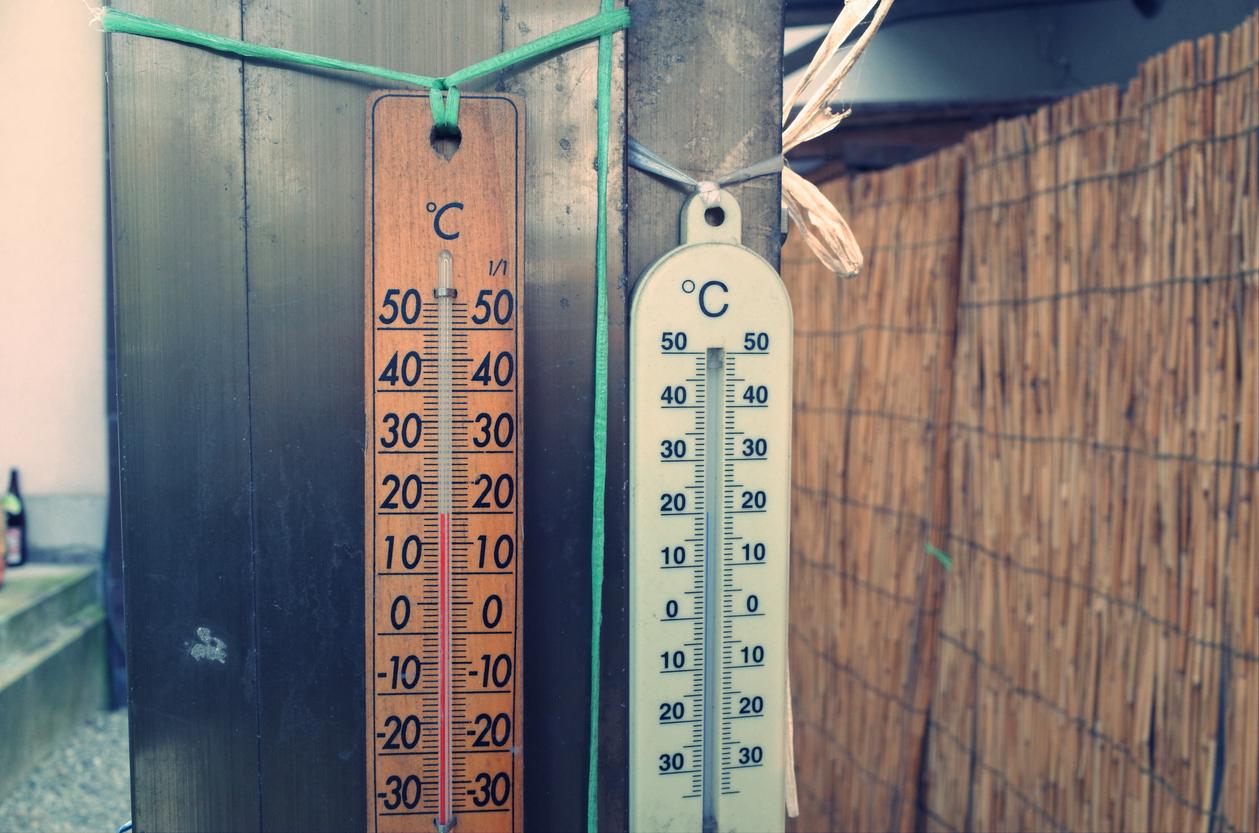How to Check the Humidity Level in Your House


Air humidity is very important for reasons we can both see and not see. Most of them, however, we can feel. If you have too high humidity in your house, then you will see condensation against the windows. A little bit of wetness around your frames might not seem like a bother, but it will mean your home is ripe for the spread of bacteria. This can be in the form of mold which leaves stains on walls, ruins furniture and can render clothing unwearable. Moreover, it can help spread bacterial infections which really make you sick. On the other hand, too low a humidity is not good for you either. This can lead to dry skin, a scratchy throat and even the proliferation of the nasty flu virus. This is why our oneHOWTOguide on how to check the humidity level in your home is so useful.
Signs of humidity in your home
Research suggests that the ideal humidity level in your home should be somewhere between 35% - 45%. Some sources suggest it can be as low as 30% or as high as 50%. Having the optimal level of humidity will help promote overall health, keep your property in good condition and provide an ideal comfort level.
Humidity is too high in your home
If the humidity level in your home is too high, there are a few tell tale signs. The first one is the obvious condensation against your windows. You will see water droplets dripping down the inside of your home windows indicating high humidity. This is a particular problem in cold climate regions. There you need to keep warm inside, while the weather outside is very cold. As warm air retains water better than cold, the moisture inside is picked up and spread out across the home. While it goes onto your windows and causes condensation, it is also going into all of the unseen parts of your house. It will go into walls, plaster and woodwork. Over time this can lead to structural damage including rotting wooden support beams and ceiling collapse. This is not to mention the smell which high humidity can provide. As mold spreads it can go into material like curtains and clothes. You may have to throw out a wardrobe or have cherished clothing items become so stinky you can no longer wear them.
Keep an eye on family members and their health. If allergies increase it could be a sign of too high a humidity. If colds are unseasonable rampant or consistent, it could be that your home is rampant with bacteria thriving in the high humidity. Runny noses and sniffles will mean high humidity.
Humidity is too low in your home
If the humidity in your house is too low, then this can also cause structural problems. This is particularly the case with wood. If you have wooden floorboards it can make the boards warp and no longer fit together correctly. If you have wooden furniture, then it can also warp and joints might come loose if the humidity is too low. This could be very sad if you have some inherited or antique furniture which would have otherwise lasted much longer.
Check on the health of the home's inhabitants as well. If flu symptoms persist, then it is most likely due to low humidity. Studies have shown that flu virus will fare well in this environment, making you fare much worse. The lack of moisture in the air can lead to dry throat (strep throat), tickly coughs and sinus trouble. The drying effect can also make your skin and eyes become much drier, making them irritable and leading to psoriasis.

How to check the humidity in your home - DIY
The best way to check the humidity level in your house or home is with a hygrometer (see below). If you want to find a way to check humidity without a hygrometer, then we have another option. We can calculate the humidity of a room by taking both the "wet" and "dry" temperatures. To do this you will need two thermometers. One will just be a regular thermometer and the other will be a regular thermometer with a water soaked piece of cotton covering the bulb. The bulb is the spherical end of the thermometer which contains mercury and is usually colored red. Ensure that the two thermometers are kept in the same place to gauge humidity correctly.
To check the humidity level, leave the two thermometers for at least 3 hours. While one thermometer simply records the temperature of the room, the other will be affected by the humidity. If the humidity is low, then the cotton will dry more quickly as the moisture evaporates into the air. As this happens, the temperature read on the thermometer will go down. If the humidity is high, then the water will take less time to evaporate and the temperature read will be higher.
To calculate the relative humidity, we need to use a relative humidity chart which we have provided below. Take the dry temperature reading and follow it down the Y axis (the vertical one on the left). Subtract the difference in temperature between the dry bulb and the wet bulb. Count along the X axis (the horizontal one along the bottom) the number of degrees difference. Remember that you need to include zero in your count. If the difference in temperature between the two thermometers is zero it means the humidity is 100%. This is the point at which the air cannot hold any more moisture, meaning no water has evaporated from the soaked cotton. If you have 100% humidity, it will be very uncomfortable. If you sweat, the air will not be able to absorb any of your moisture, so you will remain clammy and uncomfortable.
To give an example, if the temperature on the dry thermometer reads 24 ºC and the wet thermometer reads 20 ºC, the temperature difference is 4 ºC. Count along the X axis from the 24 on the Y axis like so; "zero, one, two, three, four". The square you end up on is "69". This means the relative humidity of the room is 69%.

Tips to check humidity level at home - DIY
The two thermometer set up is a homemade version of something called a psychrometer. You can buy electronic versions which will do these simple calculations and chart readings automatically. If using our DIY two thermometer set up, you can make the process quicker. The first way is to tie the two thermometers to a piece of string. Make sure they are tied on tight and the soaked cotton is held on securely. You may need to do this with a rubber band. Swing the two thermometers in the air for about 5 minutes (may seem like a long time, but it's quicker than waiting 3 or more hours). The movement will cause the water to evaporate more quickly and give you a quicker reading for the relative humidity.
The other way to make it quicker to check relative humidity is even easier. Put a fan in front of the two thermometers and turn it on. The air blown by the fan will work in a similar way to swinging them around in the air. The quickest way, however, will be to buy the electronic psychometer we mentioned before.
You can also test the humidity of your home in a more general, less accurate way. Simply set a glass with ice cubes in the room you want to check and leave it there for about 3 minutes. Exit the room while you wait as your body heat can affect what happens to the glass. When you go back in, take a look at the glass. If there are condensation droplets on the side, then the humidity is fine. If not, then it is too dry and you may need to invest in a humidifier. This process won't work in a kitchen or bathroom as the humidity in these rooms are subject to too much variability.

Check the humidity level in your home - using a hygrometer
A hygrometer is a device which measures air humidity automatically, but works in a different way to a psychrometer. There are two main types of hygrometer - analogue and digital. An analogue hygrometer will have a clock face type display with hands pointing to the relative humidity level between 0% and 100%. The digital hygrometer will use a liquid crystal display to give the same reading.
You will most likely need to calibrate your hygrometer before use. This is an important step so that you can test its accuracy. Like most devices, you get what you pay for. A cheap hygrometer will give you lesser levels of accuracy compared to a more professional (and expensive) device. To calibrate your hygrometer, mix half a cup of salt with a quarter cup of water until the salt is the consistency of powdery snow. Place the hygrometer and the wet salt into a zip-lock bag, but be careful not to spill the salt on the hygrometer or it may damage it. Seal and leave out of direct sunlight in an area with a steady temperature for a number of hours (usually around 12). After this time, your hygrometer should read 75%. If it reads 65%, it means that it is 10% off. Readjust the hand of the hygrometer so that it reads 75% and you should be good to go.
There is a wonderful piece of folkart which is used to gauge the humidity level in your home. A weather house determines the humidity by the expansion or contraction of a piece of hair or sometimes catgut. When the humidity changes, the hair contracts (when the air is dry) or expands (when the air is wet) which moves two figures which are housed in a little alpine cottage (similar to a cuckoo clock). If the female figure comes out of the house it will be sunny and dry and vice versa for the male. This works in a similar way to hygrometers, but the results are often much less accurate.

If you have any issues when trying to check the humidity level in your home, feel free to tell us about them in the comments below.
If you want to read similar articles to How to Check the Humidity Level in Your House, we recommend you visit our Maintenance and home security category.








